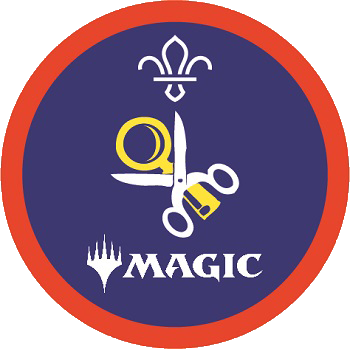It’s knot you, it’s me!
You’ll need
- Device to show photos, videos, or slides
- Access to the internet
- Scrap paper
- Coloured pens or pencils
- Rope
What to macra-make
Begin your macramé journey by trying out some basic braided crafts.
To watch in full screen, double click the video
Show off your green fingers by making a five-minute macramé plant-hanger.
To watch in full screen, double click the video
Challenge yourself by weaving a wonderful wall-hanging with a lotus flower shape.
To watch in full screen, double click the video
Before you begin
- Choose a type of thread for your group to use. Thicker rope is better for wall displays and furnishings, while string and cord are better for small gifts or decorations.
- Purchase your cord from a craft and hobby store or an online retailer. You could try to get a variety of colours for the group to choose from.
- It’s a good idea to invite along some Young Leaders and adult volunteers to help your group with this activity, as some taking part may need one-to-one support.
Run the activity
- Everyone should think about what design they’re going to make with their cord. Give everyone coloured pens or pencils and some scrap paper to sketch their ideas.
- Each person will need an item to tie their cord around. This is the base of the design. They could use the pencil they’ve just drawn the design with, or a stick from outside if they still need to draw. Look for spare items like hoops or handles that could make for interesting shapes.
- There are different kinds of knots that can be used to make macramé. Some connect the threads together and some make patterns across or along the different threads. Go online and check out some instructional videos on how to make different kinds of macramé.
- Have everyone make a start on their projects. Bear in mind that some people’s designs are likely to take longer to finish than others. Give everyone enough time to get a satisfactory amount done.
For these basic knots, use the internet to find out more about how to tie them and what they’re for:
- Barrel or Coil knot – good for finishing ends and keeping beads in places (one thread).
- Cow hitch or Larks head knot – for connecting one new thread to your mount.
- Square or reef knot – can be used in lots of different ways to create patterns and tie multiple threads together (four threads).
- Spiral stitch – to tie four threads together in a vertical spiral that looks a bit like DNA (four threads).
- Half hitch spiral – another type of spiral, which leaves a more defined line.
- Double half hitch – for making lines or diagonals with two threads.
Reflection
Macramé involves tying lots of small knots together to make a picture or a pattern. This meant that you had to keep the image of what you were making in mind while dealing with your knots. How close was your picture or pattern to what you’d set out to make? Was it hard to concentrate on knots and the bigger picture at the same time?
Imagine you’re a chef cooking someone’s dinner. You need to cook the ingredients at the same time in different pans, so that the whole meal is ready on time. But take care not to burn anything! Think about some other scenarios where it might be useful to be able to concentrate on two things at the same time.
Safety
All activities must be safely managed. You must complete a thorough risk assessment and take appropriate steps to reduce risk. Use the safety checklist to help you plan and risk assess your activity. Always get approval for the activity, and have suitable supervision and an InTouch process.
- Poles and long objects
Be careful when moving poles or long items. Take care if the ends are sharp. Have appropriate supervision for this activity.
Feel like a challenge? Check out this enormous index of complicated knots you could use in your macramé project.
Scaling up or down is a good way to challenge knowledgeable knotters. See if you can make a huge macramé pattern as a group or a miniature version of something, perhaps for a key-ring?
Using finer threads and string can make macramé very fiddly. Use thicker ropes and long staves to help make this activity more accessible to those that struggle with fine motor skills.
All Scout activities should be inclusive and accessible.
This activity is a great opportunity for any young people with existing skills in knot tying or macramé to share their skills with the group and help anyone struggling.





